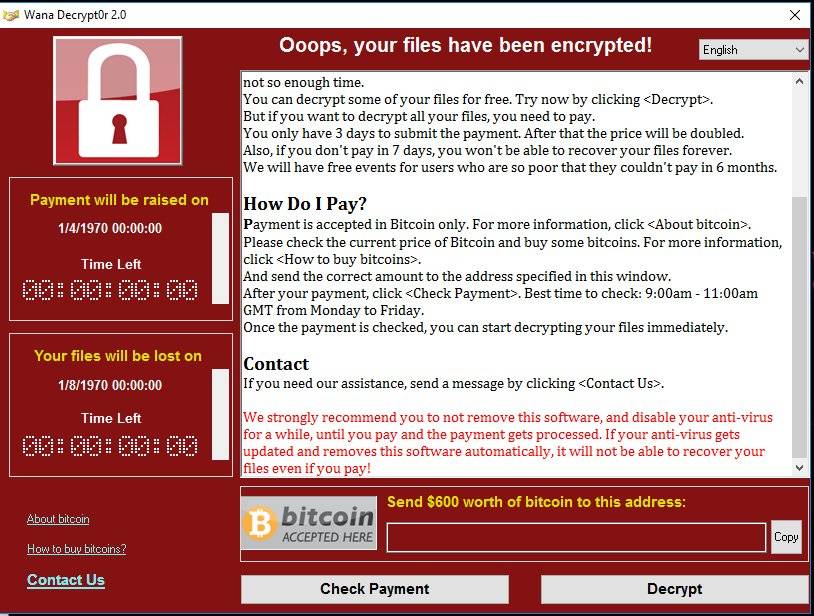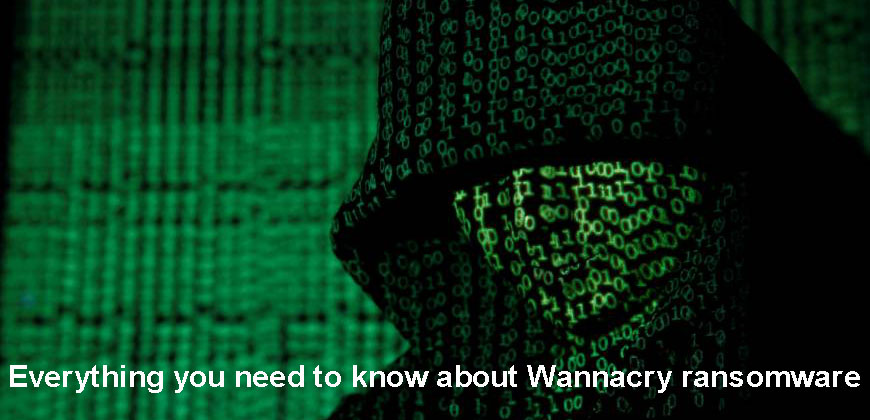Everything you need to know about Wanna cry ransomware

One of the largest cyberattacks ever is currently eating the web, hitting PCs in countries and businesses around the world.
You’ve heard the phrase “the road to Hell is paved with good intentions,” right?
Well, a vulnerability first uncovered by the National Security Agency and then released by hackers on the internet is now being used in one of the most prolific cyberattacks ever around the globe.
It’s called WannaCry, and it’s brought computer systems from Russia to China to the UK and the US to their knees, locking people out of their data and demanding they pay a ransom or lose everything. So far, more than 200,000 computers in 150 countries have been affected, with victims including hospitals, banks, telecommunications companies and warehouses.
Here’s everything you could want to know about WannaCry.
What is WannaCry?
It’s the name for a prolific hacking attack known as “ransomware,” that holds your computer hostage until you pay a ransom.
The way it works is that once it infects a computer, it encrypts — or basically scrambles — all the data. Then the program puts up a screen demanding you pay money to get access back. Typically the price increases over time until the end of a countdown, when the files are destroyed.
We first heard about WannaCry last week from the UK’s health service, which appeared to be one of the first major computer systems affected by the hack. It’s also called WannaCrypt.
You can follow who’s affected by watching this live tracking map created by MalwareTech.
Why do hackers do this?
The same reason you get telemarketing calls and junk email: It’s effective.
Security company Symantec says that ransomware attacks alone jumped by more than one-third to over 483,800 incidents in 2016. And that’s just the ones they tracked.
How do I protect my machine?
If you’re running a Windows-powered PC, make sure all your software is up to date. In addition, as always, do not open suspicious emails, click on links you don’t know or open any files you weren’t expecting.
What do I do if my computer is infected?
You’re out of luck. So far there doesn’t appear to be a way to fix WannaCry.
Shortly after WannaCry began to spread, a security researcher accidentally found a kill switch that appeared to stop WannaCry in its tracks. But hackers have since made a fix, and this time there doesn’t appear to be any way to stop it. It also has a new name Uiwix, according to researchers at Heimdal Security.
Great, so I have to pay these monsters to get my computer back?
There is currently no way to fix a computer that’s infected by WannaCry. But at the same time, paying them isn’t your best bet, since you are basically giving money to criminals.
The hackers typically demand about $300 in payment via bitcoin, an untraceable digital currency often used on shadowy parts of the internet. If that ransom isn’t paid in 72 hours, the price could double. And after a few days, the files are permanently locked.
![]()

